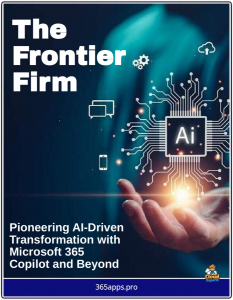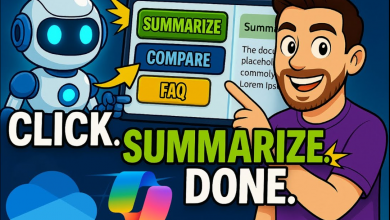 As Shervin Shaffie explains in his tutorial video AI agents, Microsoft Copilot Studio, Copilot agents, business automation — this is your blueprint to becoming an Agent Boss.
As Shervin Shaffie explains in his tutorial video AI agents, Microsoft Copilot Studio, Copilot agents, business automation — this is your blueprint to becoming an Agent Boss.
If you’re a business leader, consultant, or digital innovator, this video shows you exactly how to master the agent game and take control of AI-powered workflows.
AI is the future and AI Agent creators are in demand. Learn what it is to be an Agent Boss and how to become one. Shervin shares with you actionable steps you can take today to secure your future in the fast changing world of AI.
Work IQ
As they announced at Ignite, Microsoft introduced a wave of advancements designed to transform organizations into “Frontier Firms”—human-led, agent-powered enterprises where AI amplifies every employee.
Central to this vision is ‘Work IQ’, a new intelligence layer inside Microsoft 365 Copilot that combines work data from emails, files, and meetings with personal memory and predictive reasoning to deliver deeply personalized, secure assistance.
At its core, Work IQ continuously weaves together three streams of knowledge. First, it builds a rich, permission-aware Work Graph that maps everything the user can access—emails, documents, meeting transcripts, SharePoint sites, CRM records, and connected third-party data.
Second, it maintains an encrypted, private Memory that learns how each individual prefers to work: their tone, recurring habits, explicit instructions (“always get legal review on contracts over $500k”), and subtle patterns. Third, a powerful inference and reasoning engine runs on the latest frontier models, constantly predicting needs, spotting risks, and planning next steps while staying firmly grounded in the user’s actual data and permissions.
The result is proactive, precise assistance. Copilot can greet users in the morning with a concise briefing of urgent threads and looming deadlines, automatically pull the right numbers into a presentation, draft replies that sound exactly like the user, or warn that a deal is stalled because legal hasn’t signed off.
When Agent Mode is enabled, agents act autonomously within strict boundaries, never breaking the user’s personal rules or organizational policies.
Teams Mode – Empowering Collaborative Agents
At the heart of this revolution is the journey for organizations to become fully autonomous, and this will be achieved through “AI Team Mates”, virtual workers that perform tasks autonomously.
Microsoft is introducing the building blocks for this environment, such as the new ‘Teams mode‘ for agents. This represents a pivotal step in harnessing AI agents for collaborative work, transforming individual interactions into dynamic group conversations within Microsoft Teams. This is empowering agents to act collaboratively.
This mode allows Copilot agents to function as virtual teammates in existing group chats, responding to collective prompts with context-aware insights drawn from shared history, while respecting privacy through response previews for any personal memory elements.
Copilot agents operate seamlessly in Teams Mode by processing group-level requests for research, drafting, analysis, and coordination—such as generating market summaries with citations via the Researcher tool, comparing products, or pulling financial benchmarks—all grounded in Microsoft 365 permissions to ensure secure, compliant outputs.
For instance, a team might start with individual data gathering on a strategy, then expand to a group chat where agents synthesize inputs from Engineering, Sales, and Finance for go-to-market plans, agenda suggestions for offsites, or quarterly goal drafts with assigned priorities.
This fosters transparent human-agent collaboration, where members observe, refine, and build on AI-generated content in real time, like iterating on a Word document for a business review.
By enabling these scalable, AI-augmented workflows, Teams Mode lays the groundwork for autonomous organizations—the core of the Frontier Firm vision—where agents handle routine orchestration, freeing humans for high-value decision-making and accelerating cross-functional execution.



